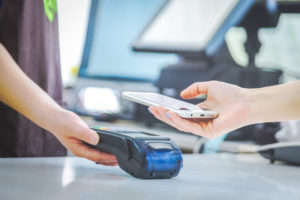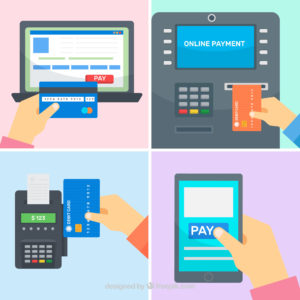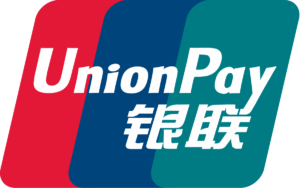
UQPAY Li Wangjian: Analysis of China’s Cross-Border B2B Payment Market
by Company Announcement May 21, 2018Cross-border payment prevails in China’s payment industry in recent years. With the tightening of policies and the encroachment of tech giants, the domestic payment industry has gradually become less profitable, powerful payment institutions have changed their business strategies to focus on Internet finance and consumer finance, while weaker payment institutions have chosen to devote to service.

Mobile payment via Pixabay
However, as mobile payment giants rapidly develop their global businesses, cross-border payment has gradually become popular in the payment industry. Yet is cross-border payment really suitable for all payment institutions? What kind of cross-border payment is suitable for payment institutions?
With the increase of national consumption, the number of China’s outbound tourists and Chinese consumers’ demands for overseas high-quality goods witness constant growth. The former push forward the overseas business of many companies, including payments giants like Wechat pay &Alipay, and Internet giants such as Ctrip and Qunar. Without a strong user base, it is difficult for companies to explore the B2C market.
The demand of citizens for overseas high-quality goods and services directly stimulated the development of cross-border e-commerce, and more precisely resulted in the rise of cross-border B2B e-commerce. Against this background, there exists a huge market space for B2B cross-border payment.
The rise of cross-border B2B e-commerce brought B2B payment opportunities
“Fragmentation” is the catalyst for B2B cross-border e-commerce. The term “fragmentation” is well known to the domestic Internet industry in recent years. On the one hand, the development of mobile Internet has made time fragmented and reduced the cost of communication, so that people can use mobile internet anywhere and anytime accessing network application to look for supply and demand connections, therefore causing more fragmented individual needs. On the other hand, such fragmentation is the result of the upgrading of cross-border supply chain, which mainly manifested in the shortening of supply chain channels.
The original B2B big orders are scattered to small orders for big B is transferred to small B between 2B ends, and cross-border B2B supply chains move closer to the retail side. Fragmentation of small orders can make the supply chain demand curve more smooth and continuous, which is also the endogenous evolutionary demand for supply chain flexibility.
Cross-border e-commerce orders have already become fragmented in the early years. Which means that cross-border business is no longer exclusive to large-scale enterprises. Small and medium enterprises, even small and micro enterprises, have begun to start their overseas businesses.
Cross-border e-commerce may owe its development to two reasons. First, China’s foreign trade situation changed a lot, with an increase in fragmented orders, and a decline in the number of large orders. Second, thanks to the open-policy of the General Administration of Customs these years, “cross-border online shopping” meets its spring.
In addition, the popularization of the Internet has also enabled the cyberization of traditional B2B international trade and its transformation to B2B cross-border e-commerce. In future, most imports and exports will be made by cross-border e-commerce.
The maturity of “balancing powers” strategy helped B2C gradually move closer to B2B2C. In early years, with the development of cross-border e-commerce and the emergence of export-oriented cross-border platforms, cross-border B2C business has gained momentum, yet recently the business meets its bottlenecks.
Logistics services cannot keep up with the pace, and international legal conflicts are increasing, both these two matters leave cross-border B2C business many problems such as customs logistics, inspection and quarantine, the last kilometer problem of localization services, and cross-border legal barriers.
Therefore, traditional cross-border B2C e-commerce has shifted to the B2B2C model, because the overseas market strategy of “balancing powers” can better serve overseas customers by cooperating with local merchants. After years of development, such strategy has driven to maturity.
Cross-border B2B e-commerce “new retail” era is coming. New retail is not only the development direction of domestic retailing, but also the direction of migration of cross-border B2B e-commerce from 1.0 to 2.0. In traditional model, cross-border e-commerce integrates information online, completes transaction and payment offline through general trading process.
New e-commerce model, however, tends to be a full-process end-to-end transaction, simultaneously forming a closed-loop transaction and achieving efficient and unified information flow and capital flow. Nevertheless, currently cross-border B2B e-commerce does not have the same payment products as domestic e-commerce. Cross-border B2B payment has become the biggest bottleneck for cross-border B2B e-commerce.
Current pain points for cross-border B2B payments

Payment methods | image via freepik
At present, there exist many problems in cross-border B2B e-commerce payment, and some questions are difficult to solve by simply improving products.
First, time and labor consumption. For example, if the company applies to the bank for general trade flow like foreign exchange settlement and purchasing, the bank will notify the company staff to bring the financial seal, corporate seal and official seal to the bank to fill in the application form and the account bank to be checked, go to the online service platform to complete contract registration and withdrawal registration with an income/expense number, and then apply for settlement of exchange in paper materials submitted to the exchange office. It requires to go to banks, fill papers, and submit paper materials.
In the Internet era, it is difficult for small and medium enterprises to accept this cumbersome process. In addition, the bank’s B2B payment requires companies to report and apply for limit to the State Administration of Foreign Exchange (SAFE), setting a high threshold for small and medium enterprises (SMEs), regardless of the complicated processes and uncertain results of approval. Third-party payment adopts a more humane online and offline integration process, but it still cannot meet the cross-border e-commerce B2B payment needs with full integration of capital flow and information flow.
Second, rate and exchange loss. PayPal, Alipay and Tenpay for C-end are obviously not suitable for cross-border B2B payment. Take PayPal as an example, transaction fees generally account for 2.9%~3.9%, in addition to cross-border charges of 0.5% for every cross-border payment. Besides, withdrawal will require an extra charge.
The rate of cross-border B2B payment services provided by the general overseas institutions, third-party payment institutions, banks, etc. is approximately 1%, but most of them have no capping mechanism and the overall charge level is still relatively high. Moreover, exchange loss has also become one of the factors considered by cross-border e-commerce company.
Finally, the impact of cross-border payment policies. If there is no exchange control, free trade and free currency exchange, probably the cross-border payment process is not that tedious, but the fact is opposite since China controls over foreign exchange policy and currency cross-border flows are only opened to regular trades. In China, there are indeed many policy requirements for cross-border payment.
For domestic third-party payment, the shortest plank for providing cross-border payment service is, as required by the policy, “the amount of a single transaction must not exceed the equivalent value of 50,000 US dollars.” 50,000 US dollars is too little in B2B cross-border payment. Of course, those familiar with policies and regulations may find that for cross-border payment, most of the current regulations are targeted on the C-end, while the regulations on the B-end are relatively few and urgently needed to be improved.
In addition, the cross-border payment service provided by the third-party payment still needs to restore the declaration process, requiring manual access, and cannot be used as an automation console and interface to achieve seamless payment docking between the payment company and the enterprise system.
In order to circumvent the amount restrictions on transaction, some companies even chose to open bank accounts of Hong Kong offshore companies. Sellers will open offshore bank accounts in Hong Kong to receive remittances from overseas buyers and remit them from the Hong Kong account to the mainland account.
Hong Kong, as an international financial center, makes the overall process more convenient and there is no mainland limit of 50,000 US dollars. However, the flow of funds from Hong Kong to the mainland is still in a lot of trouble, and it even gives rise to abusing underground money banks to transfer funds, which has huge legal risks and is definitely not desirable.
Furthermore, there are also many cross-border e-commerce companies that choose foreign cross-border payment service providers. However, China not only has foreign exchange control, but the regulation that overseas financial institutions are not allowed to provide financial services in China. Although the Two Sessions and Boao Forum for Asia (BFA) have constantly emphasized openness in recent days, documents of detailed measures have not yet been introduced so far.
Overseas cross-border payment service providers are still subject to policy restrictions, which means that overseas cross-border payment services are suitable for export proceeds, but are not suitable for import payment. The failure in supporting two-way trade greatly restricted the convenience of cross-border e-commerce.
Recently, the General Administration of Customs issued an announcement on regulating the registration management of cross-border e-commerce payment enterprises, requiring cross-border e-commerce payment enterprises to have financial licenses, banks to have the Financial License, and payment institutions to have the Payment Business License, which also raises the policy threshold for cross-border payment.
From the market situation, at present, 90% of B2B payment is realized through commercial banks, and enterprises need to apply for foreign exchange quotas. A small portion of B2B payment is achieved through third-party payment, mostly in the pilot of third-party cross-border foreign exchange payment services.
There is still a small portion desperately achieved through underground banks. The commercial foreign exchange settlement and payment provided by commercial banks are too cumbersome and consume a lot of manpower and material resources; thus, cross-border B2B e-commerce urgently needs an efficient and convenient cross-border payment platform.
A comprehensive cross-border B2B payment platform with high growth potential
To enhance the convenience of cross-border e-commerce B2B payment, various parties have made great efforts in optimizing products and service processes. All of them are reluctant to miss the opportunity to provide payment services for the trillion markets in the era of domestic consumption upgrading and cross-border e-commerce rising sharply.
 Take Unionpay International for instance, it provides a comprehensive service platform for cross-border B2B payment with satisfactory experience in all aspects.
Take Unionpay International for instance, it provides a comprehensive service platform for cross-border B2B payment with satisfactory experience in all aspects.
First, UnionPay International’s comprehensive service platform for cross-border B2B payment is based on the UPOP payment interface, with diversified payment modes for different scenarios, and is available for card-not-present quick payment, authentication payment and e-bank payment.
Among them, card-not-present payment and authentication payment are suitable for small and convenient payment, quick payment can directly access to the payment scenario of the mobile end, while e-bank payment can support large-amount payment, and is suitable for 2B transaction with large amount, mainly accessing PC payment scenarios.
Second, UnionPay International’s comprehensive service platform for cross-border B2B payment is all completed online and provides API interface capabilities, which is more efficient compared with the general offline trading process of commercial banks (on counter) and the third-party payment online and offline combined process (online operation + offline manual).
The API can better embed the payment module in the cross-border B2B e-commerce trading system to meet the need for a unified integration of its capital flow and information flow.
Third, UnionPay International has an advantaged overseas network of card acquiring. As a card organization on a fairly international basis, its business possesses internationalized compliance and can be adapted to the compliance and laws of most target countries. Additionally, supported by the services provided by its huge network of overseas acquiring member institutions, its acceptance networks have extended to 168 countries and regions, deciding that it has better end-to-end B2B payment service capabilities than domestic commercial banks and third-party payments.
Fourth, UnionPay International has an advantaged overseas network of card issuance and can conduct two-way payment and receipt through UnionPay cards. Currently, 90 million UnionPay cards have been issued overseas, especially in the Southeast Asian market. Under the national strategy of the Belt and Road , Southeast Asia will surely become the main growth point of China’s cross-border B2B e-commerce trade in the future.
Overview
At present, China is constantly creating various types of free trade zones and has begun to gradually open up the market. In the just-concluded Two Sessions, deepening the opening of the foreign trade market and the internationalization of RMB have become a hot topic. Under this background, cross-border payment will usher in an industrial outbreak.
For agencies engaged in cross-border payment, early layout of the cross-border B2B payment will be a good way to share the benefits of cross-border B2B e-commerce industry in the coming five years.
Author: Li Wangjian, the founder and CEO of UQPAY, the graduate of the Department of Computer Science and Technology, Zhejiang University, a serial entrepreneur and senior observer in cross-border payment.
Featured image via Pexels







